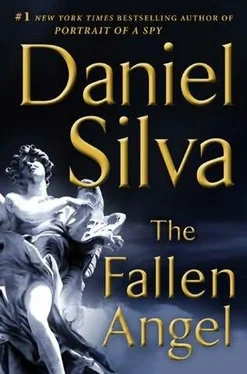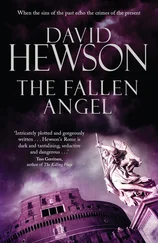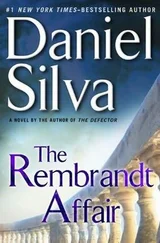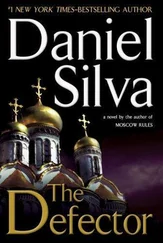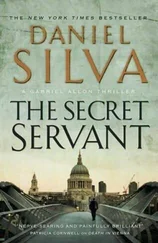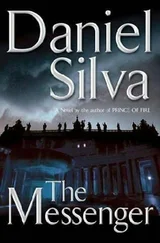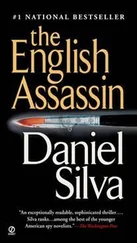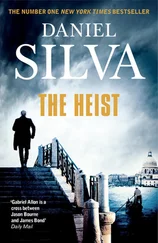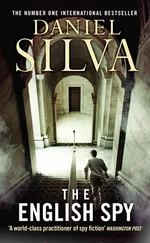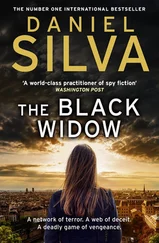But did the Temple of Solomon, as described in wondrous detail in Kings I and Chronicles, truly exist? The best way to answer that question would be to conduct a thorough but careful excavation of the entire Temple Mount plateau, with Israeli and Palestinian scholars working side by side, perhaps under United Nations supervision. Given Islamic sensitivities and current political realities, that is unlikely. So, too, is a settlement of the Arab-Israeli conflict, at least in the near future. At some point soon, Middle East watchers agree, there is likely to be another eruption of violence, a third intifada. Bombs will explode, bullets will fly, and children on both sides of the long and bloody contest over the twice-promised land will die. And to think it would have ended more than a decade ago if Yasir Arafat had only found the courage to speak a single word: “Yes.”
THIS NOVEL, LIKE THE PREVIOUS books in the Gabriel Allon series, could not have been written without the assistance of David Bull, who truly is among the finest art restorers in the world. Each year, David spends many hours scouring my manuscripts for factual errors when he could be standing in front of an easel bringing a damaged painting back to life. David has filled our lives with art and humor, and his cherished friendship is perhaps the greatest unexpected by-product of the Gabriel Allon series.
I am deeply indebted to Father Mark Haydu, the international director of the Patrons of the Arts in the Vatican Museums, for his invaluable contribution to this project. Also, to Sara Savodello, Carolina Rea, Lorna Richardson, and Dottoressa Gabriella Lalatta, a brilliant art historian who took my family and me from the glory of the Sistine Chapel room to the basement of the Vatican Picture Gallery, where the staff restorers care for the pope’s magnificent collection of paintings. There we met the remarkable Francesca Persegati, who was not at all concerned when I told her a notoriously introverted Israeli assassin would soon be working in a curtained cave beneath the loft. A special thanks to Father Kevin Lixey, who was at our side as we processed through the streets of Rome on the feast of Corpus Christi, a few feet behind Pope Benedict XVI. The meal we all shared that candlelit night was the highlight of our time in Rome.
I spoke to numerous Israeli and American intelligence officers and policymakers while preparing this manuscript, and I thank them now in anonymity, which is how they would prefer it. Fred S. Zeidman, the former chairman of the U.S. Holocaust Memorial Council, opened many doors for me in Israel and inspires me daily with his dedication to preserving the memory of those killed in the Shoah. The brilliant Maxwell L. Anderson, director of the Dallas Museum of Art, patiently answered my many questions about the curatorial hazards of acquiring antiquities under the new guidelines put in place to protect the cultural patrimony of the so-called source countries. As always, Roger Cressey, formerly of the National Security Council, now of Booz Allen Hamilton, helped me to better understand the way the world really works. My dear friend George Weigel gave me valuable insights into the historic visit of Pope John Paul II to the Holy Land in 2000 and influenced my thinking on relations between Roman Catholics and the State of Israel. “M” and “B” gave me tutorials on the turbulent Middle East with the sort of special insights only they could provide.
Michael Oren, the renowned Middle East scholar and writer who now serves as Israel’s ambassador to the United States, taught me many important lessons about the great empires that have left their mark, and the blood of their soldiers, on the soil of modern Israel. His beautiful wife, Sally, and their three amazing children, Yoav, Lia, and Noam, were by my side at many points along the journey and were a constant source of joy and love. Our dear friends Lior and Talia opened their home to us in suburban Tel Aviv and rode to the rescue when we ran into a logistical problem at a military checkpoint outside Hebron in the West Bank. Gabriel Motzkin and Emily Bilski, who have the misfortune of living next door to the Allons on Narkiss Street, accompanied us on our first visit to Israel two decades ago, and our two families spent many pleasant evenings together during our most recent trip. Rachel and Elliott Abrams shared their extraordinary knowledge of Israeli politics over dinner in Abu Ghosh; Avner took us on a late-night safari in the Golan Heights that included several high-speed pursuits of wild boar and jackals. Yehuda Deutsch led us on an unforgettable tour of the excavations in the City of David. In fact, I can still hear him singing Leonard Cohen’s majestic “Hallelujah” to steady our nerves as we walked through the dark, narrow passage of Hezekiah’s Tunnel, the cool Jerusalem spring water swirling around our ankles.
A heartfelt thanks to Yitz Applbaum, Yogi Loshinsky, and Miri Sack of the Western Wall Heritage Foundation for giving us a glimpse into the astonishing world that lies submerged along the edge of the Temple Mount. The archaeologists who pick at the ancient soil near the tunnel conduct their work with great professionalism and sensitivity, and their spirit found its way into the fictitious Eli Lavon. As the international campaign to delegitimize the State of Israel gains in intensity, the archaeologists’ efforts to unearth the ancient Jewish past in Jerusalem have taken on greater significance. To borrow a phrase from Ari Shamron, they are “waging war” in those tunnels. Fortunately, it is the one war in the Middle East in which no blood is shed.
I wish to thank my dear friend Doron Almog and his lovely wife, Didi, for taking such good care of us while we were in Israel. Before retiring from the Israel Defense Forces, Doron served as the chief of Southern Command and, in 1976, was the first Israeli soldier on the ground in Uganda during Operation Entebbe. But Doron is much more than one of his country’s most decorated soldiers; he is a humanitarian who has dedicated his life to caring for the weakest of Israel’s citizens, regardless of whether they are Arab or Jew. I will never forget the afternoon we spent together at Aleh Negev, the village he founded in southern Israel to care for the severely disabled. Nor will I forget the five members of Doron’s family who were murdered by a female Palestinian suicide bomber at Maxim restaurant in Haifa on October 4, 2003. Sixteen other innocent people were killed in the attack.
I consulted hundreds of books, newspaper and magazine articles, and Web sites while preparing this manuscript, far too many to name here. I would be remiss, however, if I did not mention the extraordinary scholarship and reporting of Peter Watson and Cecilia Todeschini, Vernon Silver, Margaret M. Miles, Jason Felch and Ralph Frammolino, Sharon Waxman, Roger Atwood, Dore Gold, Paul Johnson, Hershel Shanks, Leen and Kathleen Ritmeyer, and Simon Sebag Montefiore, whose magisterial Jerusalem: The Biography is perhaps the finest book ever written on the history of the much-fought-over city upon a hill. Louis Toscano, my dear friend and longtime personal editor, made countless improvements to my manuscript, as did my copy editor, Kathy Crosby. Obviously, responsibility for any mistakes or typographical errors that find their way into the finished book falls on my shoulders, not theirs.
We are blessed with many friends who fill our lives with love and laughter at critical junctures during the writing year, especially Rabbi David Wolpe, Jane and Burt Bacharach, Stacey and Henry Winkler, Joy and Jim Zorn, Mollie and Jack Blades, Angelique and Jim Bell, Steve Capus and Sophia Faskianos, Enola and Stephen Carter, Andrea and Tim Collins, Margarita and Andrew Pate, Mirella and Daniel Levinas, Jane and Rob Lynch, and the greater Kobak family. Former First Lady Barbara Bush and President George H. W. Bush have been a constant source of support throughout my writing career, as has their amazing chief of staff, Jean Becker, who truly runs the world from her offices in Houston and Kennebunkport. Doug Banker made certain that the time away from my desk was filled with as much fun and music as possible. Dr. Benjamin Shaffer, Washington’s preeminent orthopedic surgeon, expertly repaired a shoulder injury that made writing a novel even more painful than usual. Bob Barnett, Michael Gendler, and Linda Rappaport were a source of wise legal counsel and much laughter.
Читать дальше
Конец ознакомительного отрывка
Купить книгу
